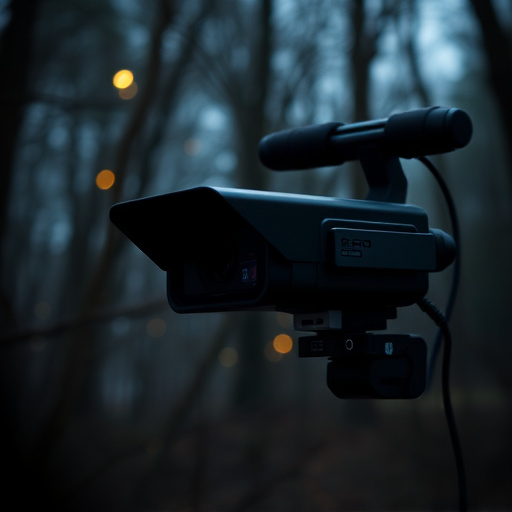Mini Hidden Spy Cameras have advanced with infrared technology, enabling high-resolution nighttime recordings. Their discreet design makes them ideal for surveillance in homes, offices, or sensitive areas. Optical sensors are crucial for detecting these cameras, analyzing low-light environments and identifying faint light sources or unusual shadows. Professional detection techniques use specialized IR sensors and real-time algorithms to accurately track covert devices. These capabilities enhance security and privacy for various sectors, while requiring high-quality sensors, efficient storage, robust data security, and regular maintenance.
Uncover the intricate world of optical sensor detection with our comprehensive guide. We explore advanced methods for identifying mini spy cameras, focusing on their nighttime recording capabilities. Learn how optical sensors play a pivotal role in detecting hidden devices, ensuring security and privacy. Discover professional techniques for conducting effective optical sensor sweeps, complete with practical applications and considerations for optimal implementation. Stay ahead of covert surveillance with our expert insights.
- Understanding Mini Spy Cameras and Nighttime Recording Capabilities
- The Role of Optical Sensors in Detecting Hidden Devices
- Professional Methods for Optical Sensor Detection Sweep
- Practical Applications and Considerations for Efficient Implementation
Understanding Mini Spy Cameras and Nighttime Recording Capabilities
Mini spy cameras, also known as hidden cameras, have evolved significantly in recent years, particularly in their nighttime recording capabilities. These tiny devices are designed to fit discreetly into various environments, making them ideal for surveillance and monitoring purposes. Equipped with advanced optical sensors, mini spy cameras can capture high-resolution footage even under low-light conditions, ensuring clear images during nighttime recordings.
The nighttime recording capabilities of these miniature cameras are enhanced by their use of infrared (IR) technology. IR LEDs emit light that is invisible to the human eye but can be detected by the camera’s sensor, enabling it to record vividly in complete darkness. This feature makes them perfect for discreetly monitoring homes, offices, or any area where unseen observation is required.
The Role of Optical Sensors in Detecting Hidden Devices
Optical sensors play a pivotal role in detecting hidden devices, such as mini spy cameras, by capturing and analyzing visual data in various environments, especially during nighttime recordings. These advanced sensors are designed to enhance visibility in low-light conditions, ensuring that even subtle variations in light are detected, which can indicate the presence of hidden surveillance equipment.
With their high sensitivity and precision, optical sensors can pick up on faint light sources, unusual shadows, or peculiar reflections that might be indicative of miniature spy cameras. Nighttime recording capabilities further strengthen this process, allowing for detailed inspections without alerting potential hidden devices. This technology is invaluable in ensuring security and privacy, particularly in sensitive areas where covert surveillance may pose a significant threat.
Professional Methods for Optical Sensor Detection Sweep
Professional methods for optical sensor detection sweep involve a combination of advanced technologies and precise techniques to ensure accurate identification and tracking of mini spy cameras, especially during nighttime recordings. These methods are critical in industries where covert surveillance is common, such as law enforcement, security, and private investigation.
One key approach is the use of specialized infrared (IR) sensors that can detect heat signatures emitted by electronic devices like miniature spy cameras. This technique, often coupled with high-resolution image capture, allows professionals to pinpoint hidden cameras even in complete darkness. Additionally, advanced software algorithms are employed to analyze visual data in real-time, enhancing detection capabilities and providing detailed insights into suspicious activities involving mini spy cameras.
Practical Applications and Considerations for Efficient Implementation
Mini spy cameras, with their ability to capture nighttime recordings discreetly and efficiently, have found practical applications across various industries. These tiny yet powerful devices are particularly useful for security purposes, offering remote surveillance capabilities that can be accessed via mobile apps at any time. They’re often employed in home security systems, businesses, and even by law enforcement for covert operations.
When implementing mini spy camera systems, several considerations come into play for efficient operation. High-quality sensors with low light performance are crucial for clear nighttime recordings. Adequate storage solutions must be in place to handle continuous video feeds without overwhelming the system. Additionally, ensuring privacy and security of recorded data is paramount; this involves using encrypted connections and secure cloud storage options. Regular maintenance and quick response times for alerts also contribute to the overall effectiveness of these systems.
In conclusion, understanding the intricacies of mini spy cameras and their nighttime recording capabilities is crucial for professionals dealing with hidden device detection. The role of optical sensors in this process cannot be overstated, as they offer advanced methods for identifying these covert devices. By employing professional techniques for optical sensor detection sweeps, experts can efficiently navigate various practical applications, ensuring comprehensive coverage while considering essential implementation details. This enables enhanced security measures and peace of mind in a world where privacy and surveillance are ever-evolving concerns.
